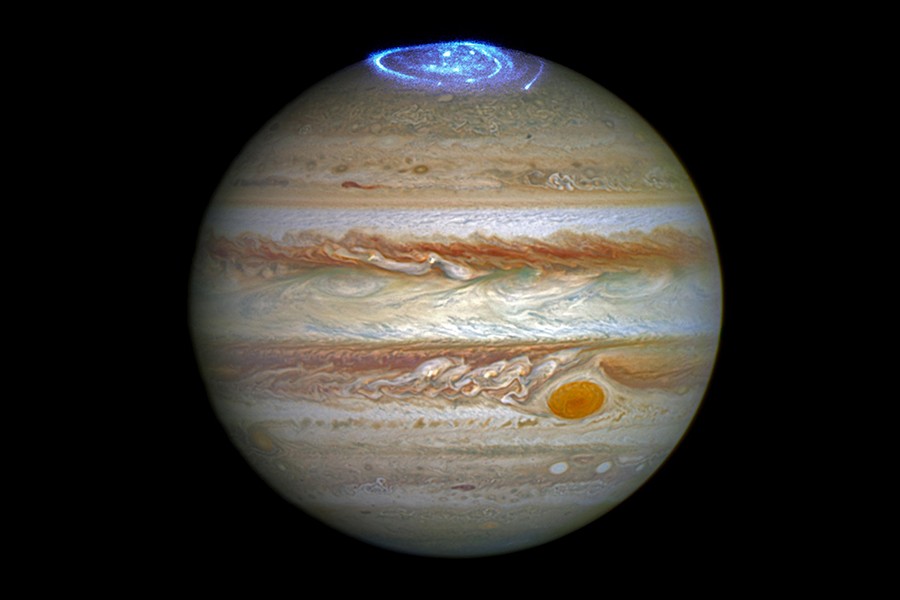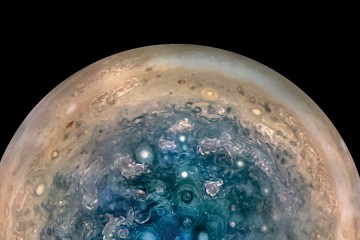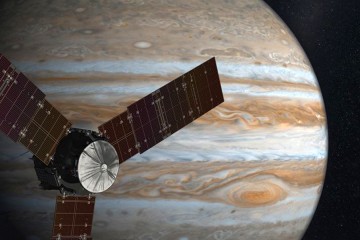Scientists working on NASA's Juno mission have observed massive amounts of energy swirling over Jupiter's polar regions that contribute to the giant planet's powerful auroras—only not in ways the researchers expected.
On Earth, several thousand electron volts—a unit of energy used in physics—are typically needed to generate the most intense auroras, the dazzling, twisting, snake-like northern and southern lights seen in places close to the planet's north and south poles. Jupiter's auroral potentials are 10 to 30 times higher than those observed on Earth.
But what's puzzling the researchers, says Barry Mauk, a team leader at the Johns Hopkins University Applied Physics Laboratory, is that despite the magnitudes of these potentials seen on Jupiter, they are observed only sometimes and are not the source of the most intense auroras, as they are on Earth.

Image caption: Reconstructed view of Jupiter’s northern lights through the filters of the Juno Ultraviolet Spectrograph instrument on Dec. 11, 2016, as the Juno spacecraft approached Jupiter, passed over its poles, and plunged toward the equator
Image credit: NASA / Bertrand Bonfond
Mauk and his colleagues, who lead the investigation for the APL-built Jupiter Energetic Particle Detector Instrument that is aboard the Juno spacecraft, presented their findings online today in the journal Nature.
By examining data collected by the ultraviolet spectrograph and energetic-particle detector that help make up the JEDI instrument, Mauk's team observed signatures of powerful electric potentials, aligned with Jupiter's magnetic field, that accelerate electrons toward the planet's atmosphere at energies up to 400,000 electron volts.
"At Jupiter, the brightest auroras are caused by some kind of turbulent acceleration process that we do not understand very well," Mauk said. "There are hints in our latest data indicating that as the power density of the auroral generation becomes stronger and stronger, the process becomes unstable and a new acceleration process takes over. But we'll have to keep looking at the data."
Scientists consider Jupiter to be a physics lab of sorts for worlds beyond our solar system, but what they learn about the forces driving Jupiter's auroras and shaping its space weather environment also has practical implications in our own planetary backyard.
"These energetic particles that create the auroras are part of the story in understanding Jupiter's radiation belts, which pose such a challenge to Juno and to upcoming spacecraft missions to Jupiter under development," Mauk said. "Engineering around the debilitating effects of radiation has always been a challenge to spacecraft engineers for missions at Earth and elsewhere in the solar system. What we learn here, and from spacecraft[s] ... that are exploring Earth's magnetosphere, will teach us a lot about space weather and protecting spacecraft and astronauts in harsh space environments. Comparing the processes at Jupiter and Earth is incredibly valuable in testing our ideas of how planetary physics works."
Posted in Science+Technology
Tagged applied physics laboratory, nasa, jupiter










